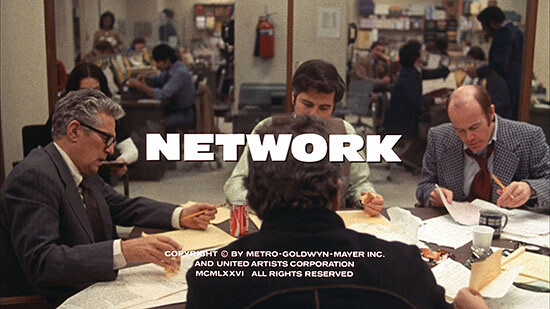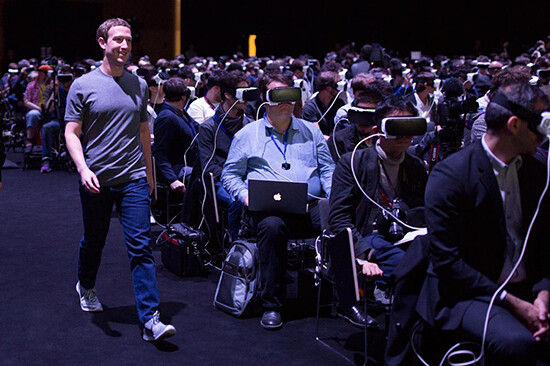Scraping the Social: “We are unknown to ourselves—and with good reason.” Friedrich Nietzsche—“Even the retards are starting to figure it out.” (comment)—“In data we trust.” Priceonomics—“The Internet fails to scale gracefully.” Chris Ellis—“I want to be surprised by my own bot”—“There is a crack in everything. That’s how the light gets in.” Leonard Cohen—“Just did my sheepish biannual LinkedIn visit, which felt too much like my sheepish biannual sweeping of dry cleaner hangers into the bin.” Dayo Olopade—Organic Reach Technologies (company)—“It’s not a pilot study. It’s small batch artisanal data.” @AcademicsSay—“No Reply” The Beatles—“A Facebook-Op occurs when one takes a photo just to upload it to Facebook later.” Urban Dictionary—“If you start to think that people are awful, you can always sign on to Twitter. Get some further proof. Then go on about your day.” Nein—“The right people can work around a bad technology, but the wrong people will mess up even a good one.” Kentaro Toyama—“My secrets won’t make you happier.” Amalia Ulman—“You can wake up now, the universe has ended.” Jim Stark—“Stop treating internet like it’s a different thing and start focusing on what you actually want your society to look like. We have to fix society, before we can fix the internet.” Peter Sunde—“We may be decentralised and disagree on a lot of topics amongst ourselves, but operations are always carefully coordinated.” Anonymous—#Apply: The same boiling water that softens potatoes, hardens eggs—“Insults from complete strangers. This is the true promise of social media.” Neil—“How valuable is reputation if any idiot off the street can rate me?” #peeple—Social media or “how to turn our thoughts violently towards the present as it is” (Stuart Hall)—“Man is the master of contradictions.” Thomas Mann.
Contradictory consciousness-management has superseded social anxiety about Bad Faith. This has long been the thesis of Slavoj Žižek. Let’s work on this thesis and take seriously the cynical statement “They know what they do, but they do it anyway” and apply this to social media. There is no longer a need to investigate the potential of “new media” and deconstruct their intentions. The internet has reached its hegemonic stage. In previous decades it was premature to associate intensive 24/7 usage by millions with deep structures such as the (sub)conscious. Now that we live fully in social media times, it has become pertinent to do precisely that: link techne with psyche.1
The revelations of Edward Snowden arrived long after our daily surf-and-swap routines had become firmly entrenched. We know we’re watched by surveillance systems but who can honesty claim to constantly be aware of them? Artistic masks are promoted as protective face shields—yet who wears them? The internet may be broken, as the phrase goes (and IT engineers have reached a consensus about this troubling analysis), but this cannot be said of social media.2 Like Snowden’s revelations, Sherry Turkle’s evidence about smartphones inhibiting one’s empathy and ability to enjoy the virtues of solitude have arrived late in the social media game.3 How hard has it become to confront offline boredom? It’s a straight-up torture.
The slogan “You are what you share” (Charles Leadbeater) expresses the transformation of the autonomous unit of the self into an outgoing entity that is constantly reproducing its social capital through the transmission of value (data) to others. Let’s face it: we refuse to perceive ourselves as “slaves of the machine.” What does it mean when we all agree that there is an addictive element to today’s social media use, yet none of us is apparently addicted? Are we really returning only sporadically?4 What exactly is being captured here? If anything, we’re encapsulated by the social sphere as such, not by the software, nor by the protocols, network architectures, or the assuredly infantile interfaces.
Under this spell of desire for the social, led by the views and opinions of our immediate social circle, our daily routines are as follows: view recent stories first, fine-tune filter preferences, jump to first unread, update your life with events, clear and refresh all, not now, save links to read for later, see full conversation, mute your ex, set up a secret board, run a poll, comment through the social plug-in, add video to your profile, choose between love, haha, wow, sad, and angry, engage with those who mention you while tracking the changes in relationship status of others, follow a key opinion leader, receive notifications, create a photo spread that links to your avatar, repost a photo, get lost in the double-barrel river of your timeline, prevent friends from seeing updates, check out something based on a recommendation, customize cover images, create “must-click” headlines, chat with a friend while noticing that “1,326,595 people like this topic.”
Social networking is much more than just a dominant discourse. We need to go beyond text and images and include its software, interfaces, and networks that depend on a technical infrastructure consisting of offices and their consultants and cleaners, cables and data centers, working in close concert with the movements and habits of the connected billions. Academic internet studies circles have shifted their attention from utopian promises, impulses, and critiques to “mapping” the network’s impact. From digital humanities to data science we see a shift in network-oriented inquiry from Whether and Why, What and Who, to (merely) How. From a sociality of causes to a sociality of net effects. A new generation of humanistic researchers is lured into the “big data” trap, and kept busy capturing user behavior whilst producing seductive eye candy for an image-hungry audience (and vice versa).
Without noticing, we have arrived at a new, yet unnamed, stage: the hegemonic era of social media platforms as ideology. Products and services are of course usually subject to ideology. We have learned to “read” ideology into them. But at what point can we convincingly say they have become ideology themselves? It is one thing to state that Mark Zuckerberg (founder of Facebook) is an ideologue, working in the service of US intelligence agencies, or to document community or political groups using his social media platform in ways unplanned or counter to expectations inherent to its design. It is quite another to work on a comprehensive social media theory. It is a crucial time for critical theory to reclaim lost territory and bring on exactly this: a shift from the quantitative to the qualitative, uncomputable impacts of this ubiquitous formatting of the social. It is liberating for research to sever itself from the instrumental approach of (viral) marketing and public relations. Stop pushing, start analyzing. Network technologies are rapidly becoming the “new normal,” withdrawing their operations and governance from view. We need to politicize the New Electricity, the privately owned utilities of our century, before they disappear into the background.


The 2008 chapter of internet criticism is coming to a close. For the next round of The Critique of the Political Economy, the internet and digital technologies will have to be fully integrated. The easy opposition of California utopians vs. Euro pessimists has been superseded by much larger planetary issues such as the future of work. We need to take internet critique beyond the normative regulation of behavior and politicize the anxiety of the youth and their particular addictions and distractions. We have long come to terms with the actual and virtual nature of the social, as its potential for play and manipulation seems increasingly in abeyance. Social media demand from us that we perform in a never-ending show. We keep coming back, always remaining logged in, until the #DigitalDetox sets in and we’re called to different realms.
The social, political, and economic promise of the internet as a decentralized network of networks lies in tatters. Social media alternatives, five years after their initial appearance, haven’t made much progress at all.5 Despite all well-intended critical predictions, the herds have not moved on to greener pastures. The overall picture is one of stagnation in a field defined by the corporate domination of a handful of players. We all remain stuck in the social media mud, and it’s time to ask why. Comparable to the late-1970s stagnation in mainstream media critique, a political economy approach will not be sufficient if we want to come up with workable strategies. One possible way out could be a post-Freudian answer to the question: What’s on a User’s Mind?6 We need to answer the question as to what social media actually offer. Which desires do they appeal to? Why is updating such a seductive yet boring habit? Can we develop a set of critical concepts that would describe our compulsive attraction to social media, without reducing that attraction to addiction rhetoric?


A starting point for reading social media as ideology would be Wendy Chun’s 2004 essay on the idea of “software” as ideology.7 Chun’s work, along with the work of Jodi Dean and others, speaks strongly to the media theorist coming to terms with the peak of neoliberal transition and the triumph of proprietary software. The prominence of ideology as a central term in debates has faded away since the mid-1980s. The backdrop of ideology theory in the 1970s was the spectacular peaking of the power of the state apparatus (also called the welfare state) that was commissioned to administrate the postwar class compromise. Whilst Daniel Bell’s End of Ideology, as announced in 1960, had arrived with the victory of neoliberalism at the end of the Cold War, there was an intuitive feeling that ideology—with a small i—had not yet left the stage, and the World Without Ideas was not yet within reach, despite concerted efforts to diminish the role of public intellectuals and critical discourses.
The “Californian ideology” as defined in 1995 by Richard Barbrook and Andy Cameron helped us trace the motives underlying the internet back to their Cold War roots (and the ambivalent hippie culture). Fred Turner’s 2006 classic From Counterculture to Cyberculture did much the same. But the historical perspective is not much use if it cannot explain social media’s contemporary and persistent success since the 1990s. Now, as in the 1970s, the role of ideology in navigating the limits of existing systems is all too real. To study ideology is to take a close look at this everyday life, here and now. What remains particularly unexplained is the apparent paradox between the hyper-individualized subject and the herd mentality of the social. What’s wrong with the social? What’s right with it? Positivity is as pervasive in California as it is in the Italian cyberspace scene, which, in a Gramscian move, has embraced the “social network” as a sign within popular culture that the multitude can beat the mainstream in its act of mediation. Italian critics, activists, and artists are not unlike many others in being hyperaware of all the controversies that surround the products and services made in Silicon Valley, while remaining mostly positive about the magic potion called social networking.
One function of ideology as defined by Louis Althusser is recognition, the (in)famous interpellation of the subject that is being called upon.8 We can apply this and speak of the process of becoming-user. This is the unnoticed part of the social media saga. Before we enter the social media sphere, everyone first fills out a profile and choses a username and password in order to create an account. Minutes later, you’re part of the game and you start sharing, creating, playing, as if it has always been like that. The profile is the a priori part and the profiling and targeted advertising cannot operate without it. The platforms present themselves as self-evident. They just are—facilitating our feature-rich lives. Everyone that counts is there. It is through the gate of the profile that we become its subject.
For Althusser, we live inside ideology in this way—the formula applies in particular to social media in which subjects are addressed as users who do not exist without a profile. It is justified to use this slightly authoritarian, hermetic concept of ideology because of the highly centralized top-down structure of social media architecture in this age of platform capitalism, which leaves zero space for users to reprogram their communication spaces.
Despite all the postmodernism and cynical neoliberalism that has deemed it redundant, it is no surprise that ideology (again) rules. (It is more remarkable how total the concept’s fall from use has been.) The main issue is that we are less and less aware of how it rules. When it comes to social media we have an “enlightened false consciousness” in which we know very well what we are doing when we are fully sucked in, but we do it anyway. This even accounts at a meta-level for the popularity of Žižek’s insights—and could be one of the best explanations for his success. We’re all aware of the algorithmic manipulations of Facebook’s news feed, the filter-bubble effect in apps, and the persuasive presence of personalized advertisement. We pull in updates, 24/7, in a real-time global economy of interdependencies, having been taught to read news feeds as interpersonal indicators of the planetary condition. So in what way does Louis Althusser need updating?


Four decades after the Althusser era, we do not associate ideology with the state in the same way he and his followers did. To qualify Facebook and Google as falling within the Althusserian definition of “ideological state apparatus” sounds odd, if not exotic. In this era of late neoliberalism and right-wing populism, ideology is associated with the market, not with the state, which has withdrawn into the role of merely securing the market. But lest we forget, it was ideology theory itself that contributed to the “crisis of marxism.” It led the way in opening up marxism to issues thrust to the fore by the student movement, the rise of feminism, and other “new social movements,” and also highlighted the stagnation and bankruptcy of the Soviet Union. The growing interest in media and “cultural studies” did the rest.
When the Berlin Wall fell in 1989, weakened Communist parties could no longer “annex” and overrule the rainbow of justice and redistribution issues of the “properly” (or revolutionary) social state, let alone its countercultural practices. The tactics of overdetermination in the name of the working class therefore no longer worked. The so-called “patchwork of minorities,” non-applying themselves to the new normal, were left literally to their own devices, without an overarching political framework, let alone organization (or antagonism). Within a decade, two of the defining centripetal forces of Marxist theory as ideology critique lost their dominance: State and Party. The associated disappearance of ideology as a main focus of attention in philosophy and the social sciences turned into the common belief that while “ideas still mattered,” they are no longer able to rule people’s lives. Nowadays, ideas are praised because they can shape the future, but taken as rules and norms they are believed to be too messy to govern our contradictory everyday lives under capital.
Treating social media as ideology means observing how it binds together media, culture, and identity into an ever-growing cultural performance (and related “cultural studies”) of gender, lifestyle, fashion, brands, celebrity, and news from radio, television, magazines, and the web—all of this imbricated with the entrepreneurial values of venture capital and start-up culture, with their underside of declining livelihoods and growing inequality. Every user has their confession: “It’s definitely harder to avoid social media than it is to give into it. Most people tend to give into it, because its easier” (Adele).


Wendy Chun wrote her 2004 essay on software as ideology in the golden 2.0 era of the web, when software was coming to be considered synonymous with—and confused with—PCs and laptops. She wrote: “Software is a functional analogue to ideology. In a formal sense computers understood as comprising software and hardware are ideology machines.” She noted that software “fulfills almost every formal definition of ideology we have, from ideology as false consciousness to Louis Althusser’s definition of ideology as a ‘representation’ of the imaginary relation of individuals to their real conditions of existence.’” In an age of installed, micro-perceptual effects and streamed programming, ideology does not merely refer to an abstract sphere where the battle of ideas is being fought. Think more in line with a Spinozan sense of embodiment—from the repetitive strains of Tinder swiping, to text neck, to the hunched-over-laptop syndrome.
What is crusted as orthodoxy in Althusser needs some adaptation and updating, not only in terms of a class analysis. But it is still remarkable how smoothly an Althusserian ideology framework fits today’s world, as Chun proves:
Software, or perhaps more precisely operating systems, offer us an imaginary relationship to our hardware: they do not represent transistors but rather desktops and recycling bins. Software produces users. Without operating system (OS) there would be no access to hardware; without OS no actions, no practices, and thus no user. Each OS, through its advertisements, interpellates a “user”: calls it and offers it a name or image with which to identify.
We could say that social media performs the same function, and is even more powerful.
“What are you doing?” said Twitter’s original phrase. The question marks the material roots of social media. Social media platforms have never asked “What are you thinking?” Or dreaming, for that matter. Twentieth-century libraries are full of novels, diaries, comic strips, and films in which people expressed what are were thinking. In the age of social media we seem to confess less what we think. It’s considered too risky, too private. We share what we do, and see, in a staged manner. Yes, we share judgments and opinions, but no thoughts. Our Self is too busy for that, always on the move, flexible, open, sporty, sexy, and always ready to connect and express.
With 24/7 social visibility, apparatus and application become one in the body. This is a reversal of Marshall McLuhan’s Extensions of Man—we are now witnessing an Inversion of Man. Once technology entangles our senses and gets under our skin, distance collapses and we no longer have any sense that we are bridging distances. With Jean Baudrillard we could speak of an implosion of the social into the hand-held device in which an unprecedented accumulation of storage capacity, computational power, software, and social capital is crystallized. Things get right in our face, our ears, steered by our autonomous finger tips. This is what Michel Serres admires so much in the navigational plasticity of the mobile generation, the smoothness of its gestures, symbolized in the speed of the thumb, sending updates in seconds, mastering mini-conversations, grasping the mood of a global tribe in an instant. To stay within the French realm of references: social media as the apparatus of sexy and sporty “active acting” makes it a perfect vehicle for the literature of despair epitomized by Michel Houellebecq’s messy body(-politics).
The illusion with which the user surrounds him- or herself while swiping and tapping through social media updates feels natural and self-evident for the very first time. There is no steep learning curve or rite of passage; we need not shed blood, sweat, and tears to fight our way into the social hierarchy. From day one the network configuration makes us feel at home, as if WhatsApp, QQ, and Telegram have always existed. Down the line, however, this immediate familiarity becomes the main source of discontent. We’re no longer playing, like in the good old days of LamdaMOO and Second Life. Intuitively, we sense that social media constitute an arena of struggle where we display our “experientalism” (James Wallman), where hierarchy is a given, and profile details such as gender, race, age, and class are not merely “data” but decisive measures in the social stratification ladder.
Social media’s imaginary community that we stumble into (and leave behind the moment we log out) is not fake. The platform is not a simulacrum of the social. Social media do not “mask” the real. Neither the software nor the interface of social media are ironic, multilayered, or complex. In that sense, social media are no longer (or not yet) postmodern. The paradoxes at work here are not playful. The applications do not appear to us as absurd, let alone Dada. They are self-evident, functional, even slightly boring. What attracts us is the social, the never-ending flow, and not the performativity of the interfaces themselves. (Performativity seems to be the main draw of virtual realty, now in its second hype cycle, twenty-five years after its first).
Networks are not merely arenas of competition among rival social forces. This is a far too idealized point of view. If only. What fails here is the “staging” element. Platforms are not stages; they bring together and synthesize (multimedia) data, yes, but what is lacking here is the (curatorial) element of human labor. That’s why there is no media in social media. The platforms operate because of their software, automated procedures, algorithms, and filters, not because of their large staff of editors and designers. Their lack of employees is what makes current debates in terms of racism, anti-Semitism, and jihadism so timely, as social media platforms are currently forced by politicians to employ editors who will have to do the all-too-human monitoring work (filtering out ancient ideologies that refuse to disappear).
Whereas gadgets such as smartphones and cameras have a (hyped-up and thus limited) fetish quality, the social network as such fails to have such a status. The network has an ecological status, comparable to Sloterdijk’s theory of the spheres. It surrounds us like air; it’s a Lebenswelt, a (filter) bubble, comparable to the medieval worldview or imagined Mars colonies. Today’s cosmology consists of layers made of dating apps, soccer portals, software forums, and porn sites woven together by search engines, news sites, and social media. As in the case of air, it will become quite a task to prove its existence, but once ideology shows its ugly side, therapy works through the unconscious, paradoxes start to fall apart, and the ideology unravels.
Going back to 2004, Wendy Chun was occupied with the issue of metaphors when taking software seriously as a new kind of social realism: “Software and ideology fit each other perfectly because both try to map the material effects of the immaterial and to posit the immaterial through visible cues. Through this process the immaterial emerges as a commodity, as something in its own right.” The details seem less interesting to deal with: “Users know very well that their folders and desktops are not really folders and desktops, but they treat them as if they were—by referring to them as folders and as desktops. This logic is, according to Slavoj Žižek, crucial to ideology.” Is it useful to also note that the Facebook category of “friends” has become a similar metaphor. We can surely say the same of the Facebook “news feed.”


So, what will happen when the audience becomes too much to deal with? More important than deconstructing surface appearances is, in Chun’s words, to argue that “ideology persists in one’s actions rather than in one’s beliefs. The illusion of ideology exists not at the level of knowledge but rather at the level of doing.” Here, the rhetoric of “interactivity” obfuscates more than it reveals about the way users negotiate interfaces; since the computational and control mechanisms of interfaces are hidden, users cannot technically “interact” with them directly enough to understand them. The like economy “behind” our smart devices is a particularly relevant social media example. What, for instance, will happen when we reveal that we have never believed in our own likes? That we never liked you in the first place?
Let’s appraise the bots and the like economy for what they are: key features of platform capitalism aimed at capturing value behind the backs of their users. Social media are a matter of neither taste nor lifestyle, in the sense of “consumer choice.” They are our technological mode of the social. In the previous century we would never have regarded writing letters or making a telephone call as matters of taste. They were “cultural techniques,” massive flows of symbolic exchange. Soon after its initial emergence , social media transformed from a hype and online service into essential infrastructure, just like letters and telegrams and the telephone used to be. It is precisely at this juncture of “becoming infrastructure” that we (re)open the ideology file.
This essay is the next chapter of my ongoing research into critical internet culture. The previous part was finished in September 2015 when I wrapped up Social Media Abyss, which was published in English by Polity Press in June 2016, with translations into Italian, German, Turkish, and Chinese.
See “Facebook’s ‘context collapse’: Massive drop in personal sharing,” Net Imperative, April 14, 2016 →. There is growing evidence that first-hand personal materials are no longer shared by Joe and Joanna Sixpack. Nicolas Carr calls this “context restauration”: “When people start backing away from broadcasting intimate details about themselves, it’s a sign that they’re looking to reestablish some boundaries in their social lives, to mend the walls that social media has broken … They are shifting their role from that of actor to that of producer or publisher or aggregator.” “Context collapse and context restoration,” Rough Type (blog), April 10, 2016 →.
Sherry Turkle, Reclaiming Conversation (New York: Penguin, 2015).
When terms or symptoms are inflated, they lose their meaning. This might be the case with addiction. If entire societies are addicted, the term loses its ability to create differences and it is time to search for alternative concepts. A possible new term could be “stickyness.” Julia Roberts on social media: “It’s kind of like cotton candy: It looks so appealing, and you just can’t resist getting in there, and then you just end up with sticky fingers, and it lasted an instant.”
See the announcement for the launch of the Unlike Us network, July 2011 →
A variation on the title (“What’s On a Man’s Mind”) of a popular drawing of Freud with a naked lady worked into his forehead. A poster of the drawing decorated my teenage bedroom in 1976–77.
Wendy Chun, “On Software, or the Persistence of Visual Knowledge,” Grey Room 18 (Winter 2004): 26–51. All quotes from Chun that appear below are taken from this essay.
Louis Althusser, “Ideology and Ideological State Apparatuses (Notes Towards an Investigation),” first published in La Pensée 151, June 1970. English translation available in Lenin and Philosophy and Other Essays (New York: Monthly Review Press, 2001).
